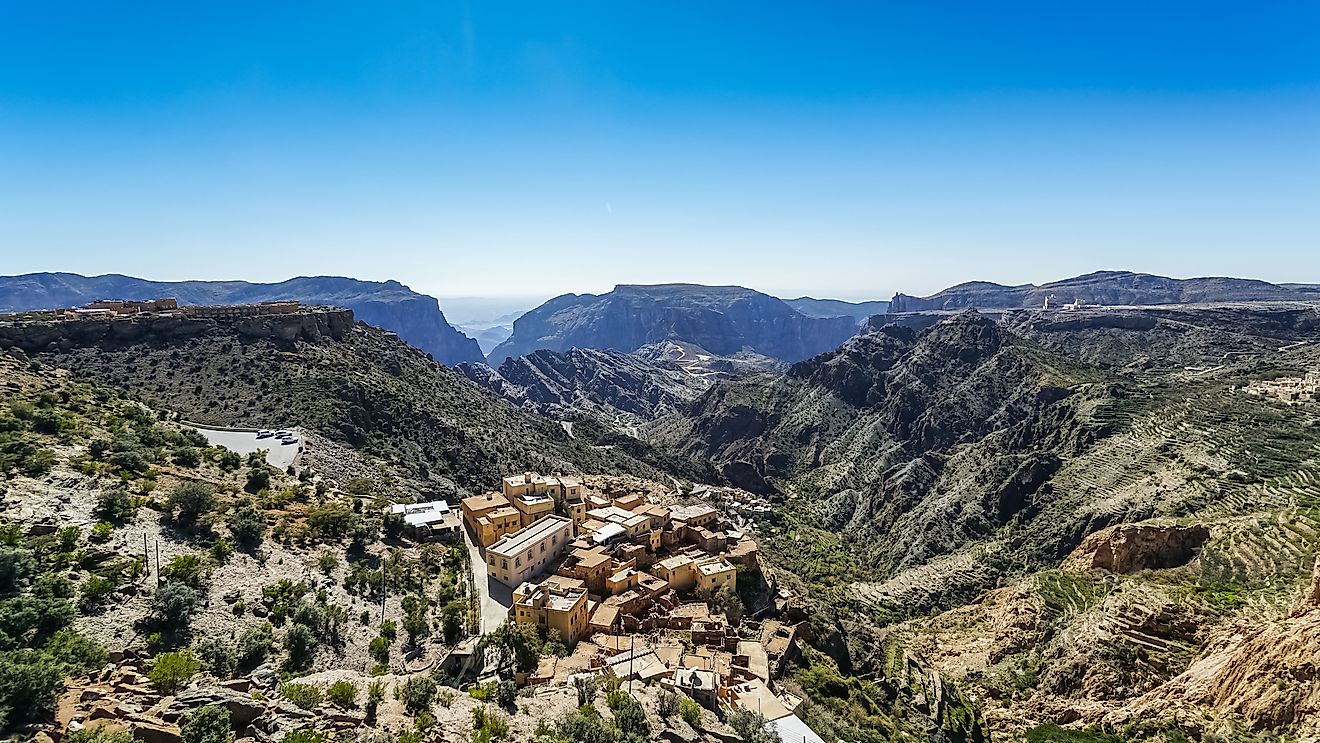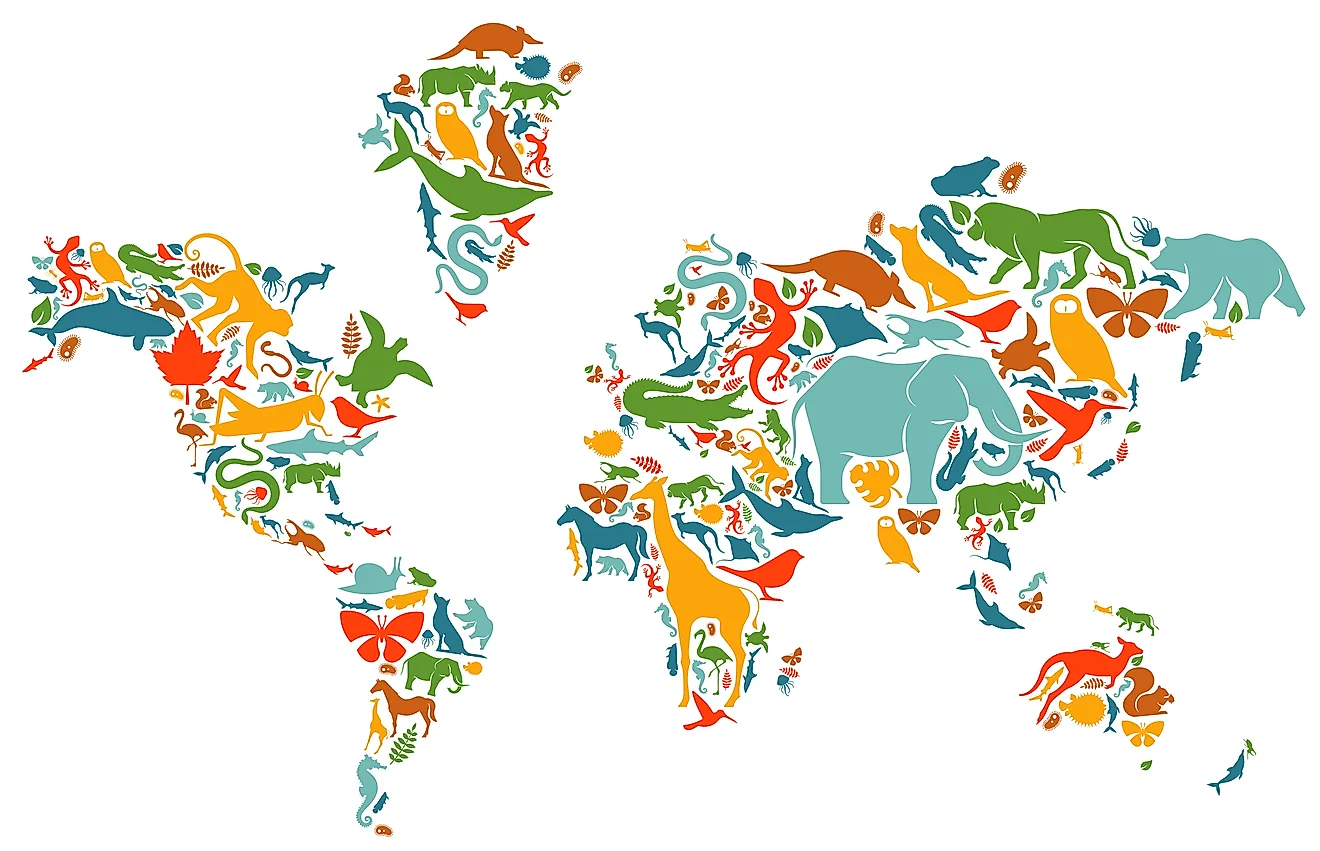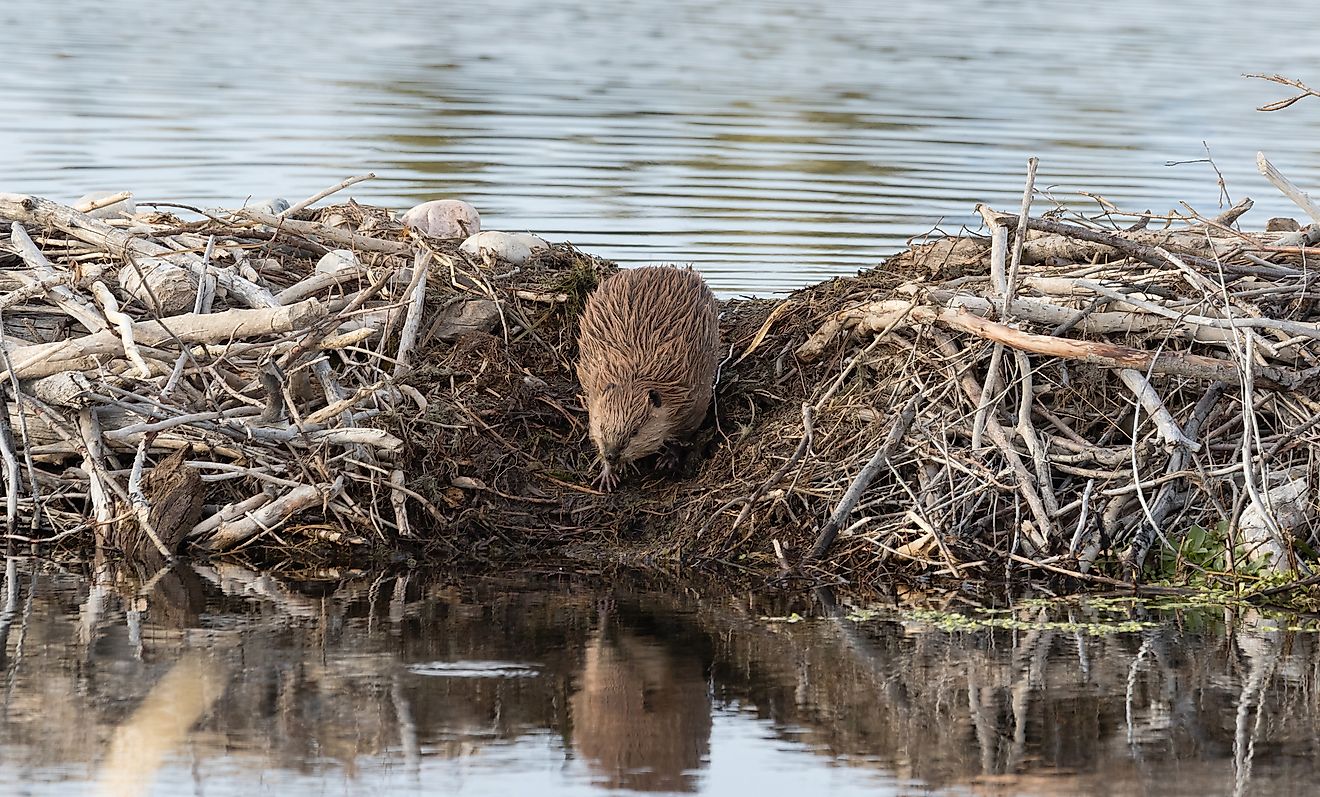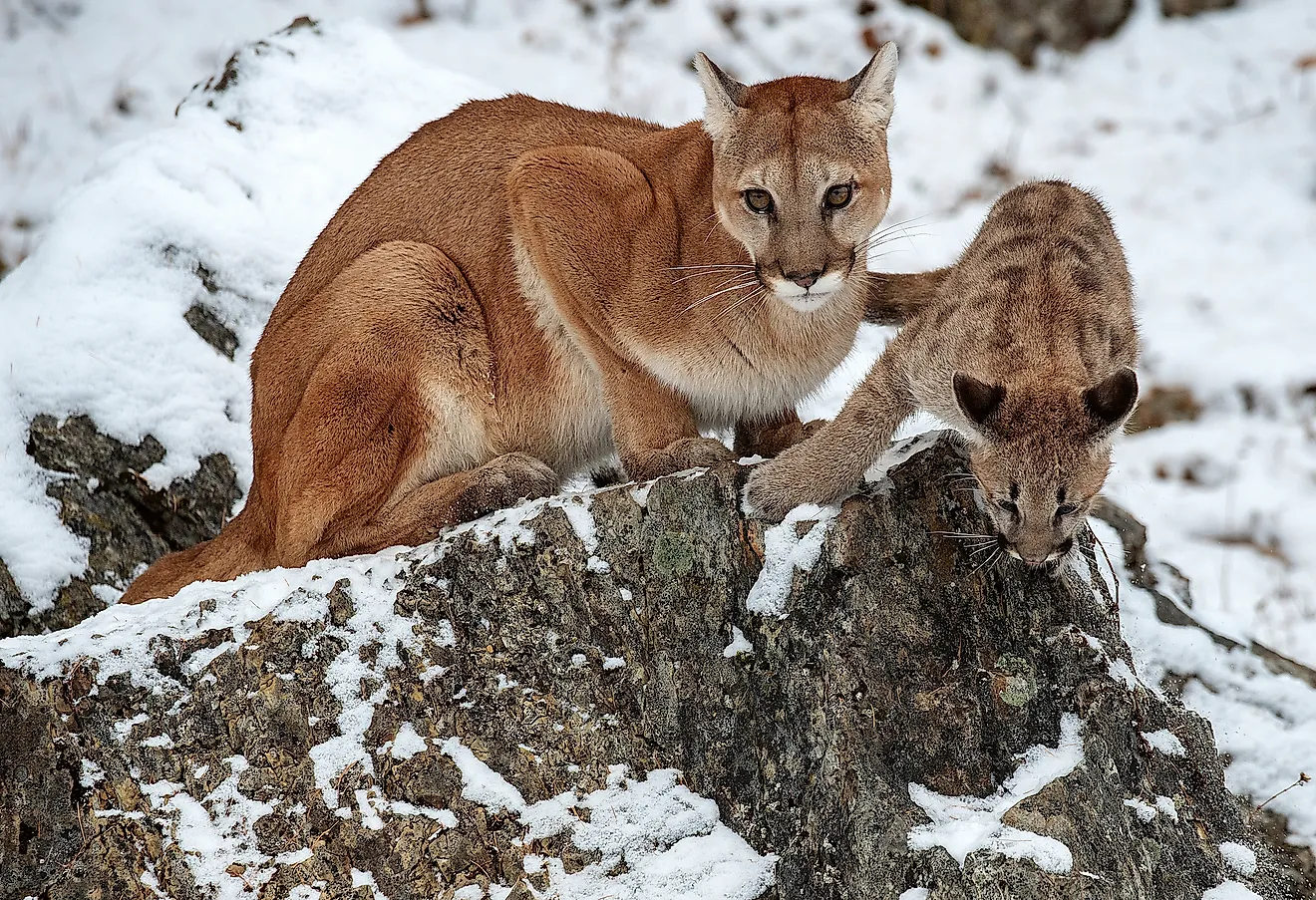National Forests Of The United States: Significance In Biodiversity Conservation
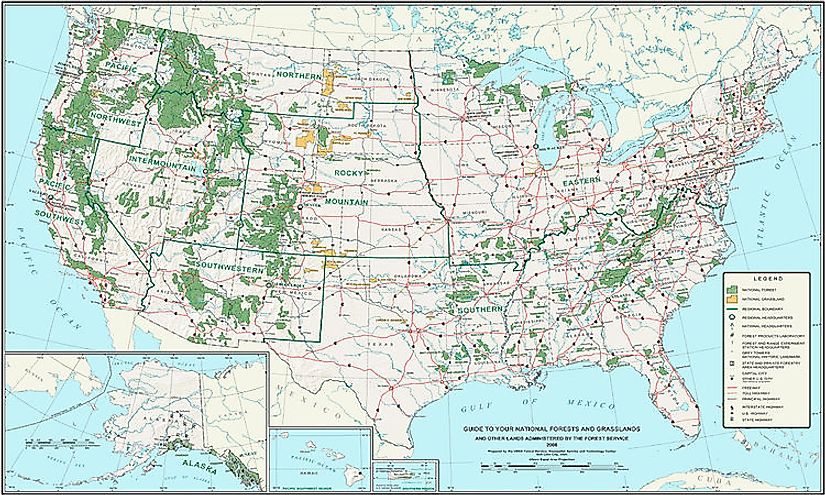
What Are US National Forests?
In the United States, National Forests are areas of protected federal lands. Federal lands are owned by the US government and National Forests are managed by the US Forest Service, which is a division of the larger US Department of Agriculture. These woodland areas are largely set aside to protect forest land and sources of water, as well as provide much needed lumber. Today, the US has 154 National Forests, encompassing 294,275 square miles.
History Of The US National Forests
In 1891, Congress passed the Forest Reserve Act, which gave the president power to conserve and protect public forest lands. Yellowstone Park Timber and Land Reserve became the first National Forest on March 30, 1891. At this time, the US Department of the Interior was in charge of managing these public lands. In 1905, Congress enacted the Transfer Act, which transferred management responsibility to the US Department of Agriculture and created the Forest Service.
President Theodore Roosevelt is remembered for drastically increasing the number of National Forests by 1907. In response, Congress limited presidential powers in this regard. In 1908, the government reorganized the National Forest System. In 1911, Congress amended the Organic Act by adding additional reasons for National Forests, including: recreation, livestock grazing, wildlife protection, timber source, and watershed protection.
Where Are National Forests Located?
Today, the 154 US National Forests are located in 40 different states. The 10 without National Forests are: Rhode Island, North Dakota, Maryland, New Jersey, Massachusetts, Kansas, Hawaii, Iowa, Connecticut, and Delaware. Alaska leads the country with the largest area of National Forests - 21.9 million acres. California comes in second place with 20.8 million acres and Idaho is third with 20.4 million acres. Additionally, Idaho holds the distinction of having the largest percentage of its total area covered by National Forests - 38.2%. This percentage is followed by Oregon with 24.7% and Colorado with 20.9%.
Types Of US National Forests
The US National Forest System manages 2 specific types of forests: east of the Great Plains and west of the Great Plains.
The forests in the eastern part of the country are largely considered second growth forests, which means they were previously logged and have since grown back. This is in contrast to old-growth forests, which have remained undisturbed for longer periods of time. The majority of forests in the eastern region were once privately-owned and used as major sources of timber during the colonial-era. The US government purchased these eastern forests in order to slow down logging and permit forest regrowth.
A large number of the forests located in the western part of the country are considered old-growth. These forests have been owned by the US government since the westward expansion, which has helped preserve them from the private timber industry.
Conflicts Over US National Forests
Because resource extraction is permitted in National Forests, conflicts over management issues often arise. This is unique to National Forests because resource extraction is not permitted on other federal lands. Conservationists and environmentalists often go up against logging and mining companies concerning protection and extraction of the natural resources located on these federal lands. The conflicts center around the need to conserve endangered plants and animals, the importance of maintaining old-growth forests, and the construction of access roads through these areas. US National Forests carry an IUCN VI distinction, or Managed Resource Protected Area.
National Forests Of The United States: Significance In Biodiversity Conservation
| Rank | NameA | Location[6]B | Area |
|---|---|---|---|
| 1 | Allegheny | Pennsylvania | 513,655 acres (2,078.7 km2) |
| 2 | Angeles | California | 661,565 acres (2,677.3 km2) |
| 3 | Angelina | Texas | 154,140 acres (623.8 km2) |
| 4 | Apache-Sitgreaves | Arizona, New Mexico | 2,626,306 acres (10,628.3 km2) |
| 5 | Apalachicola | Florida | 576,119 acres (2,331.5 km2) |
| 6 | Arapaho | Colorado | 720,418 acres (2,915.4 km2) |
| 7 | Ashley | Utah, Wyoming | 1,378,424 acres (5,578.3 km2) |
| 8 | Beaverhead-Deerlodge | Montana | 3,362,638 acres (13,608.1 km2) |
| 9 | Bienville | Mississippi | 180,251 acres (729.4 km2) |
| 10 | Bighorn | Wyoming | 1,105,311 acres (4,473.0 km2) |
| 11 | Bitterroot | Montana, Idaho | 1,594,579 acres (6,453.0 km2) |
| 12 | Black Hills | South Dakota, Wyoming | 1,250,866 acres (5,062.1 km2) |
| 13 | Boise | Idaho | 2,648,273 acres (10,717.2 km2) |
| 14 | Bridger-Teton | Wyoming | 3,383,302 acres (13,691.7 km2) |
| 15 | Caribou-Targhee | Idaho, Wyoming | 2,624,739 acres (10,621.9 km2) |
| 16 | Carson | New Mexico | 1,390,885 acres (5,628.7 km2) |
| 17 | Chattahoochee-Oconee | Georgia | 866,763 acres (3,507.7 km2) |
| 18 | Chequamegon-Nicolet | Wisconsin | 1,523,704 acres (6,166.2 km2) |
| 19 | Cherokee | Tennessee, North Carolina | 656,394 acres (2,656.3 km2) |
| 20 | Chippewa | Minnesota | 671,952 acres (2,719.3 km2) |
| 21 | Chugach | Alaska | 5,419,095 acres (21,930.3 km2) |
| 22 | Cibola | New Mexico | 1,616,435 acres (6,541.5 km2) |
| 23 | Clearwater | Idaho | 1,682,068 acres (6,807.1 km2) |
| 24 | Cleveland | California | 425,580 acres (1,722.3 km2) |
| 25 | Coconino | Arizona | 1,852,201 acres (7,495.6 km2) |
| 26 | Colville | Washington | 954,668 acres (3,863.4 km2) |
| 27 | Conecuh | Alabama | 83,983 acres (339.9 km2) |
| 28 | Coronado | Arizona, New Mexico | 1,718,945 acres (6,956.3 km2) |
| 29 | Croatan | North Carolina | 161,325 acres (652.9 km2) |
| 30 | Custer | Montana, South Dakota | 1,189,465 acres (4,813.6 km2) |
| 31 | Daniel Boone | Kentucky | 564,168 acres (2,283.1 km2) |
| 32 | Davy Crockett | Texas | 161,140 acres (652.1 km2) |
| 33 | Delta | Mississippi | 62,109 acres (251.3 km2) |
| 34 | Deschutes | Oregon | 1,612,218 acres (6,524.4 km2) |
| 35 | De Soto | Mississippi | 532,100 acres (2,153.3 km2) |
| 36 | Dixie | Utah | 1,885,655 acres (7,631.0 km2) |
| 37 | Eldorado | California | 695,098 acres (2,813.0 km2) |
| 38 | El Yunque | Puerto Rico | 28,683 acres (116.1 km2) |
| 39 | Finger Lakes | New York | 16,352 acres (66.2 km2) |
| 40 | Fishlake | Utah | 1,452,969 acres (5,880.0 km2) |
| 41 | Flathead | Montana | 2,413,573 acres (9,767.4 km2) |
| 42 | Francis Marion | South Carolina | 258,673 acres (1,046.8 km2) |
| 43 | Fremont-Winema | Oregon | 2,253,796 acres (9,120.8 km2) |
| 44 | Gallatin | Montana | 1,849,701 acres (7,485.5 km2) |
| 45 | George Washington & Jefferson | Virginia, West Virginia, Kentucky | 1,792,209 acres (7,252.8 km2) |
| 46 | Gifford Pinchot | Washington | 1,312,274 acres (5,310.6 km2) |
| 47 | Gila | New Mexico | 2,658,321 acres (10,757.8 km2) |
| 48 | Grand Mesa | Colorado | 345,939 acres (1,400.0 km2) |
| 49 | Green Mountain | Vermont | 408,419 acres (1,652.8 km2) |
| 50 | Gunnison | Colorado | 1,666,514 acres (6,744.1 km2) |
| 51 | Helena | Montana | 982,385 acres (3,975.6 km2) |
| 52 | Hiawatha | Michigan | 898,475 acres (3,636.0 km2) |
| 53 | Holly Springs | Mississippi | 156,243 acres (632.3 km2) |
| 54 | Homochitto | Mississippi | 192,237 acres (778.0 km2) |
| 55 | Hoosier | Indiana | 203,627 acres (824.0 km2) |
| 56 | Humboldt-Toiyabe | Nevada, California | 6,290,945 acres (25,458.6 km2) |
| 57 | Huron-Manistee | Michigan | 975,130 acres (3,946.2 km2) |
| 58 | Idaho Panhandle Coeur d'Alene, St. Joe, Kaniksu | Idaho, Montana, Washington | 3,074,438 acres (12,441.8 km2) |
| 59 | Inyo | California, Nevada | 1,957,264 acres (7,920.8 km2) |
| 60 | Kaibab | Arizona | 1,561,060 acres (6,317.4 km2) |
| 61 | Kisatchie | Louisiana | 607,540 acres (2,458.6 km2) |
| 62 | Klamath | California, Oregon | 1,672,442 acres (6,768.1 km2) |
| 63 | Kootenai | Montana, Idaho | 1,810,361 acres (7,326.3 km2) |
| 64 | Lake Tahoe Basin Management Unit | California, Nevada | 152,008 acres (615.2 km2) |
| 65 | Land Between The Lakes | Kentucky, Tennessee | 171,251 acres (693.0 km2) |
| 66 | Lassen | California | 1,066,027 acres (4,314.1 km2) |
| 67 | Lewis and Clark | Montana | 1,871,490 acres (7,573.7 km2) |
| 68 | Lincoln | New Mexico | 1,095,470 acres (4,433.2 km2) |
| 69 | Lolo | Montana | 2,237,961 acres (9,056.7 km2) |
| 70 | Los Padres | California | 1,772,237 acres (7,172.0 km2) |
| 71 | Malheur | Oregon | 1,480,818 acres (5,992.7 km2) |
| 72 | Manti-La Sal | Utah, Colorado | 1,269,984 acres (5,139.4 km2) |
| 73 | Mark Twain | Missouri | 1,504,881 acres (6,090.0 km2) |
| 74 | Medicine Bow – Routt | Colorado, Wyoming | 2,210,327 acres (8,944.9 km2) |
| 75 | Mendocino | California | 915,532 acres (3,705.0 km2) |
| 76 | Modoc | California | 1,680,405 acres (6,800.4 km2) |
| 77 | Monongahela | West Virginia | 920,583 acres (3,725.5 km2) |
| 78 | Mount Baker-Snoqualmie | Washington | 2,562,955 acres (10,371.9 km2) |
| 79 | Mount Hood | Oregon | 1,069,427 acres (4,327.8 km2) |
| 80 | Nantahala | North Carolina | 532,300 acres (2,154.1 km2) |
| 81 | Nebraska | Nebraska | 140,813 acres (569.8 km2) |
| 82 | Nez Perce | Idaho | 2,223,586 acres (8,998.5 km2) |
| 83 | Ocala | Florida | 384,693 acres (1,556.8 km2) |
| 84 | Ochoco | Oregon | 854,817 acres (3,459.3 km2) |
| 85 | Okanogan-Wenatchee | Washington | 1,501,826 acres (6,077.7 km2) |
| 86 | Olympic | Washington | 631,808 acres (2,556.8 km2) |
| 87 | Osceola | Florida | 160,192 acres (648.3 km2) |
| 88 | Ottawa | Michigan | 990,961 acres (4,010.3 km2) |
| 89 | Ouachita | Arkansas, Oklahoma | 1,785,468 acres (7,225.5 km2) |
| 90 | Ozark-St. Francis | Arkansas | 1,153,374 acres (4,667.5 km2) |
| 91 | Payette | Idaho | 2,326,779 acres (9,416.1 km2) |
| 92 | Pike | Colorado | 1,096,146 acres (4,435.9 km2) |
| 93 | Pisgah | North Carolina | 509,283 acres (2,061.0 km2) |
| 94 | Plumas | California | 1,189,554 acres (4,814.0 km2) |
| 95 | Prescott | Arizona | 1,257,005 acres (5,086.9 km2) |
| 96 | Rio Grande | Colorado | 1,837,661 acres (7,436.8 km2) |
| 97 | Rogue River-Siskiyou | Oregon, California | 1,718,893 acres (6,956.1 km2) |
| 98 | Roosevelt | Colorado | 814,090 acres (3,294.5 km2) |
| 99 | Sabine | Texas | 161,088 acres (651.9 km2) |
| 100 | Salmon-Challis | Idaho | 4,226,973 acres (17,106.0 km2) |
| 101 | Sam Houston | Texas | 163,264 acres (660.7 km2) |
| 102 | Samuel R. McKelvie | Nebraska | 115,847 acres (468.8 km2) |
| 103 | San Bernardino | California | 678,980 acres (2,747.7 km2) |
| 104 | San Isabel | Colorado | 1,108,639 acres (4,486.5 km2) |
| 105 | San Juan | Colorado | 1,864,595 acres (7,545.7 km2) |
| 106 | Santa Fe | New Mexico | 1,544,748 acres (6,251.4 km2) |
| 107 | Sawtooth | Idaho, Utah | 1,802,133 acres (7,293.0 km2) |
| 108 | Sequoia | California | 1,139,240 acres (4,610.3 km2) |
| 109 | Shasta-Trinity | California | 2,229,286 acres (9,021.6 km2) |
| 110 | Shawnee | Illinois | 273,482 acres (1,106.7 km2) |
| 111 | Shoshone | Wyoming | 2,439,093 acres (9,870.7 km2) |
| 112 | Sierra | California | 1,311,231 acres (5,306.4 km2) |
| 113 | Siuslaw | Oregon | 630,291 acres (2,550.7 km2) |
| 114 | Six Rivers | California | 977,090 acres (3,954.1 km2) |
| 115 | Stanislaus | California | 899,427 acres (3,639.9 km2) |
| 116 | Sumter | South Carolina | 372,778 acres (1,508.6 km2) |
| 117 | Superior | Minnesota | 2,092,767 acres (8,469.1 km2) |
| 118 | Tahoe | California | 872,981 acres (3,532.8 km2) |
| 119 | Talladega | Alabama | 393,006 acres (1,590.4 km2) |
| 120 | Tombigbee | Mississippi | 67,468 acres (273.0 km2) |
| 121 | Tongass | Alaska | 16,748,360 acres (67,778.2 km2) |
| 122 | Tonto | Arizona | 2,866,663 acres (11,601.0 km2) |
| 123 | Tuskegee | Alabama | 11,349 acres (45.9 km2) |
| 124 | Uinta-Wasatch-Cache | Utah, Wyoming, Idaho | 2,492,404 acres (10,086.4 km2) |
| 125 | Umatilla | Oregon, Washington | 1,405,898 acres (5,689.5 km2) |
| 126 | Umpqua | Oregon | 986,120 acres (3,990.7 km2) |
| 127 | Uncompahgre | Colorado | 951,767 acres (3,851.7 km2) |
| 128 | Uwharrie | North Carolina | 51,218 acres (207.3 km2) |
| 129 | Wallowa-Whitman | Oregon, Idaho | 2,261,480 acres (9,151.9 km2) |
| 130 | Wayne | Ohio | 243,180 acres (984.1 km2) |
| 131 | White Mountain | New Hampshire, Maine | 761,687 acres (3,082.4 km2) |
| 132 | White River | Colorado | 2,287,495 acres (9,257.2 km2) |
| 133 | Willamette | Oregon | 1,681,674 acres (6,805.5 km2) |
| 134 | William B. Bankhead | Alabama | 181,988 acres (736.5 km2) |

